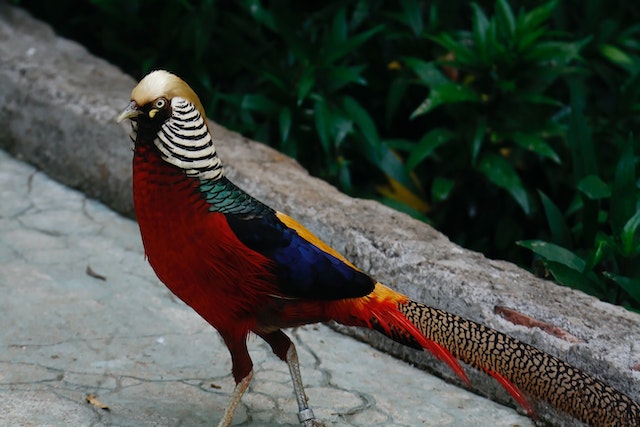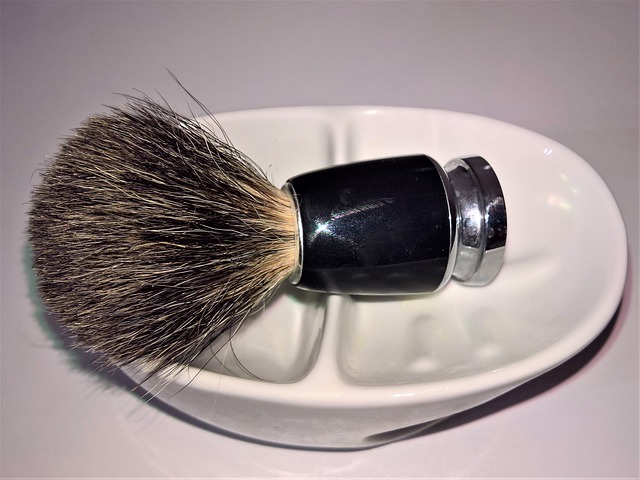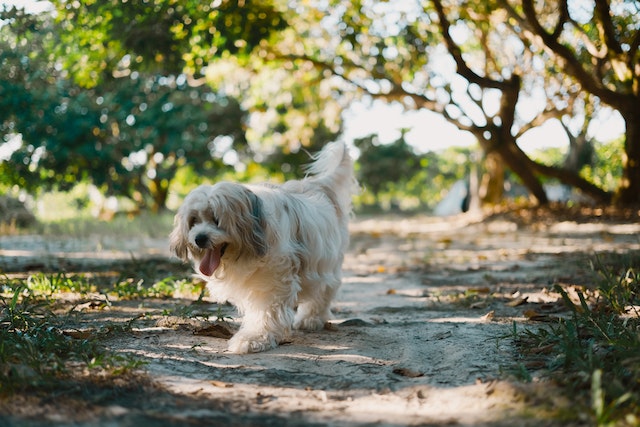How To Clean A Pheasant?
Pheasant need to be cleaned properly before they can be cooked or preserved, so cleaning is a crucial part of the preparation process. There are a variety of ways to clean pheasants. Regardless of whether you have just slaughtered a pheasant yourself or obtained one from a reputable source, knowing how to do so will ensure that you dispose of any feathers, guts, or other parts that are not desired, leaving you with a clean and ready-to-cook bird. The purpose of this guide is to give you a step-by-step guide on how to prepare and clean pheasants, from feather removal to gutting and final preparations, in order to take you through the process step-by-step. With the guidance provided in this article, you will be well prepared to handle and clean a pheasant with confidence, resulting in a tasty and safe meal. Let’s take a closer look at how to clean a pheasant, and then how to prepare it for your next tasty meal by looking at the specifics of its cleaning.
What is Pheasant?
There are many types of birds that are classified as pheasants on the basis of their family, Phasianidae. Known for its colorful plumage, it is a species of bird that is native to a variety of parts of the world, including Europe, Asia, and North America, due to its colorful plumage. Hunting pheasants for sport is a very popular sport because of its delicious meat. Pheasants can also be raised for culinary purposes or they can be hunted for sport.
As a result of their long, dark feathers, a wide tail, and a strong beak, pheasants have a distinctive appearance with long, light-colored feathers. Males of the species are commonly referred to as roosters or cocks and are especially notable for their eye-catching plumage that is often used to attract a mate, and is also used for courtship displays. The females, or hens, are of a more subtle color than the males, which allows them to increase their camouflage while nesting and rearing their young.
As a ground-dwelling bird, pheasants are mainly found in grasslands, woodlands, and agricultural areas. Pheasants are usually found near the edges of this kind of terrain. Among the foods they consume are grains, seeds, berries, insects, and small invertebrates, which make up a variety of their diet. In addition to their ability to fly swiftly, pheasants have been known to utilise these abilities to navigate through their habitat or escape predators.
Pheasants are often hunted during designated hunting seasons for their edible meat, which is one of the main reasons for their popularity. Besides being bred in captivity for culinary purposes, they are also bred in captivity for their meat, which makes up a number of dishes and cuisines around the world. There have been many cultures throughout history that have found it enjoyable to hunt pheasants and prepare them for eating, in order to offer a unique and tasty dining experience.
A pheasant is a fascinating bird that has a long history of being appreciated for the aesthetic beauty of the bird and for its meal value. There is a great diversity of avian life due to the presence of these birds in both natural habitats as well as human-made ones.
How To Clean A Pheasant? – Step By Step Guide
In order to clean a pheasant, you will need to remove the feathers and prepare the bird so it can be cooked or preserved. How to clean a pheasant step-by-step is presented in the following guide:
- Gather the necessary tools:
- Sharp knife
- Cutting board
- Clean water
- Plucking gloves or pliers (optional)
- Bucket or basin
- Remove the feathers:
-
Taking the pheasant by the wing feathers, you will need to pluck them off its body. To pluck feathers, you can use pliers or plucking gloves to grip the feather firmly and pull it out. It is best to pluck feathers in the opposite direction from the direction in which they are growing.
-
It is suggested to start by plucking the larger feathers on the wings and tail of the bird, then working your way down to the smaller ones on the body.
-
All visible feathers should be removed, including the downy feathers if they are present.
-
- Singe the remaining feathers (optional):
-
It may be necessary for you to use a propane torch or a gas stove if any stubborn feathers or tiny quills remain after the feathers have been removed.
-
Make sure that you hold the bird above the flame, it should be moving in a circular motion, but do not burn the bird’s skin.
-
- Remove the head and feet (optional):
- Depending on whether you wish to remove the head and feet, you can use a sharp knife. In terms of cooking method or personal preference, you may decide to skip this step if you wish.
- Gutting the pheasant:
-
On a clean surface, lay the pheasant breast-side up on its back.
-
From the vent (anus) of the belly towards the neck, make a shallow incision along the midline of the belly.
-
The innards (organs) of the body cavity can be gently removed by pulling apart the skin with your fingers or by using a knife to gently pull them out of the body cavity. While carrying out this process, it is important to take precautions so that no organs are punctured.
-
You can either discard the innards of the animal or save them for a different purpose, such as making stock out of them.
-
- Cleaning the cavity:
-
To remove any remaining blood or debris from the pheasant, it should be thoroughly rinsed with clean water, both inside and outside, before storage.
-
Make sure that the cavity of the dental implant is clean and free of any leftover organs or residues from the past.
-
- Final rinse and storage:
- In order to ensure that the pheasant is completely clean, give it a final rinse with clean water at the end of the process.
- The bird should be patted dry with a clean cloth or paper towels.
- Prepare your preferred recipe if you intend to cook the pheasant immediately after it has been caught.
- Pheasants can be stored for a long period of time in a sealed bag or container, and stored in the refrigerator or freezer until you are ready to cook them.
How to Breast a pheasant
A pheasant is breasted when its breast meat is removed from the bird, a process known as breasting. To learn how to breast a pheasant, here is a step-by-step guide to help you do it:
- Prepare your tools:
- Sharp knife
- Cutting board
- Clean water
- Paper towels or clean cloth
-
To begin with, you will need to pluck the feathers from the pheasant’s breast area in order to do so. It is best to use plucking gloves or pliers if you want to grip and pull out the feathers with force. The feathers should be plucked in the opposite direction to how they are growing.
-
Having gone through the breast area and removing any feathers that are present, make a small incision along the center of the breastbone and stitch it shut. In order to perform this procedure, you should begin at the base of the breastbone near the vent (anus) and work your way upwards.
-
As you extend the incision, you will need to follow the contours of the breastbone as you cut along its sides. If you are making these cuts, you need to be careful not to puncture any internal organs as you do so.
-
As you separate the meat from the bone with your fingers, or you can use the tip of your knife, place the breastbone on top of the meat so it can be easily seen. In order to loosen the breast meat from the bone on both sides, you need to begin at the top and work your way down.
-
Following the contours of the breastbone and ribs, use the knife to carefully cut away the meat from the bone once the meat has been separated from the bone. Make sure that all the meat is removed from the bone, making clean cuts so that the meat will not be wasted.
-
Inspect the breast meat once it has been removed from the bird for any feathers or debris that may have been left behind. To make sure that no feathers, blood, or other impurities remain on the meat, you should rinse it under clean water.
-
To remove excess moisture from the breast meat, use paper towels or a clean cloth to dab it with dry.
-
In order to use this breast meat in your favorite recipes, you can either use it in the present or store it for future use. As long as you plan on cooking it as soon as possible, you may choose to follow your preferred recipe. If not, then you can store the breast meat in a sealed bag or container and keep it stored in the refrigerator or freezer until you are ready to use it.
By breast-feeding a pheasant, you can be sure that the best meat will be extracted from the bird, which is renowned for its tenderness and great flavor. When pheasants are to be cooked, this method of preparing them is commonly used in order to make sure a whole bird does not need to be used. In order to ensure that the meat remains safe for consumption throughout the process, you should use safe food handling and hygiene practices.
Disclaimer: Depending on your location, there may be specific regulations and permits that need to be obtained to hunt and process game birds. Whenever handling and processing pheasants, it is very important that you follow local laws, regulations, and best practices.
How to Clean feather pheasant
For the purpose of preserving the beauty and integrity of pheasant feathers, delicate handling is required when cleaning them. I have prepared a step-by-step guide to help you get your feather pheasant cleaned:
- Assess the feathers: The feathers should be examined to make sure there are no dirt, debris, or stains present. Assess the strength and integrity of the feathers in order to decide whether they can be cleaned effectively. In the event that the feathers are damaged or fragile, it would be best if a professional was consulted for their restoration.
-
Gently remove loose dirt: For this purpose, you can use a soft brush or even a gentle stream of air from your hair dryer on the cool setting in order to loosen the dirt from the feathers. If you want to catch all the particles in the feathers, hold them over a clean surface or a large bowl.
-
Spot cleaning: In the case of specific stains or soiling on certain parts of the feathers, you will be able to carry out a spot cleaning. Wet a cotton swab or a clean cloth with a small amount of mild detergent or dish soap mixed with water and wipe the area with the dampened cloth. Be careful not to saturate the feathers excessively when dabbing or wiping the affected areas, and gently dab or wipe the affected areas. In order to prevent damage to the feathers, do not rub or scrub vigorously on them.
-
Rinse the feathers (optional): It is recommended that you rinse the feathers under gentle running water to remove any soap residue that may have remained after you have spot-cleaned them. During the short time you hold the feathers under water, make sure you ensure that the water is flowing in a direction in which the feather shafts are pointing. Ensure that the feathers are not over wet by avoiding excessively wetting them.
-
Remove excess water: Using a soft, absorbent towel or paper towel, rub the feathers lightly with a soft, absorbent towel or paper towel to remove excess water from the feathers. The feathers should not be pulled or twisted as this could lead to damage to these delicate little creatures.
-
Air-dry the feathers: It is recommended that you lay the feathers flat atop a clean towel or mesh drying rack at room temperature and away from direct sunlight and heat sources. Allow the feathers to air-dry naturally. When handling or storing them, it is important to ensure that they are completely dry.
-
Fluff and reshape (optional): If you would like to fluff and reshape the feathers after they have dried completely, you can use your fingers to do so. In order to restore the feather’s natural appearance and texture, gently stroke and separate the feather’s strands.
-
Using a clean, dry container or sealing a bag would be the best way to store the feathers if you plan to keep them for a long time. If you want to prevent damage to the feathers, you should avoid compressing them tightly. Please place them in a cool and dry place where they wont be exposed to moisture, direct sunlight, or severe temperature changes.
To avoid damaging the delicate structures in pheasant feathers, it is imperative that the feathers are cleaned and handled with care and gentleness in order to avoid damaging the feathers. A professional feather cleaner or restorer may be able to give you advice on how best to care for feathers if they are particularly valuable or fragile.
Frequently Asked Questions – How To Clean A Pheasant?







